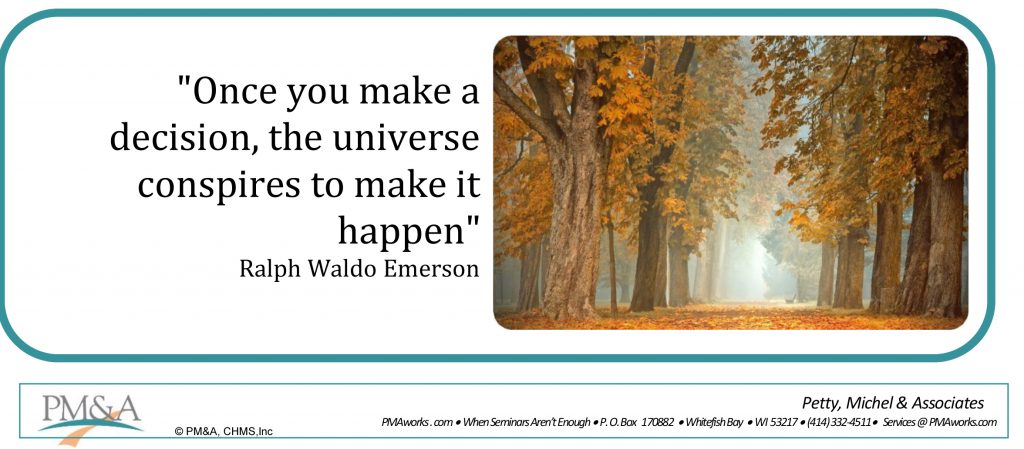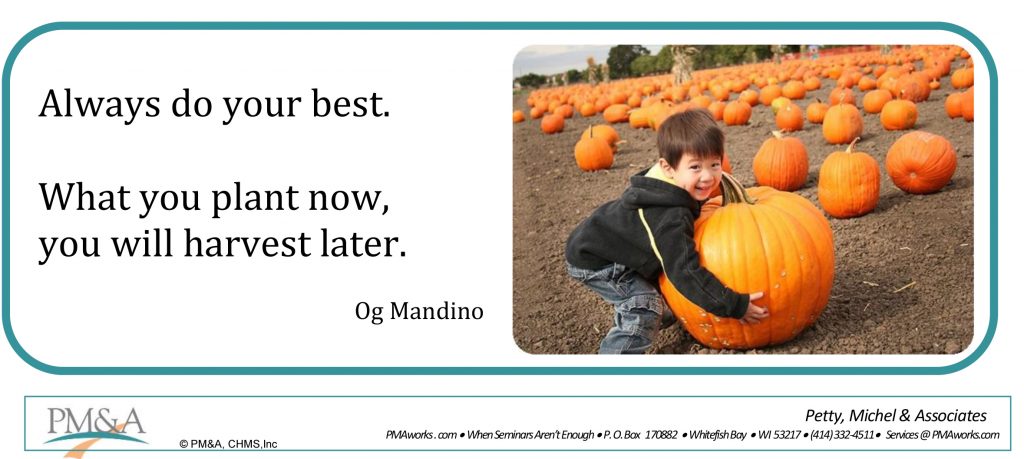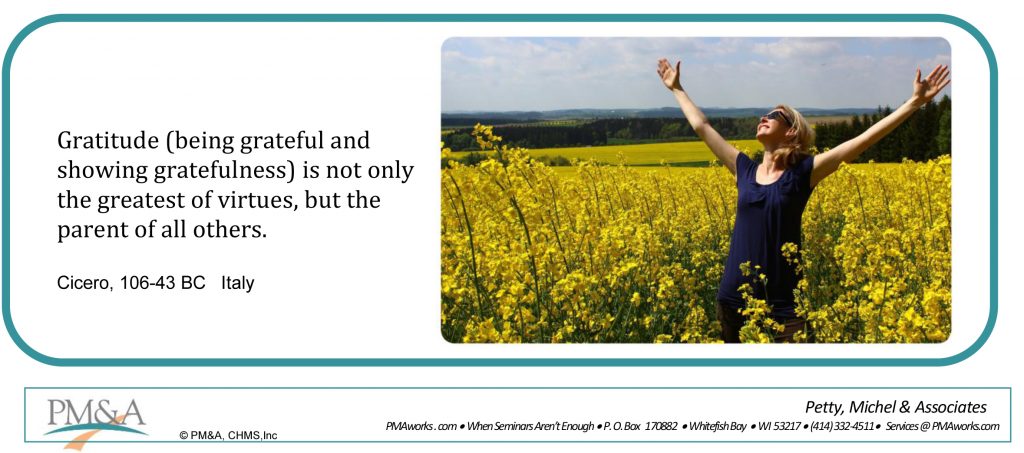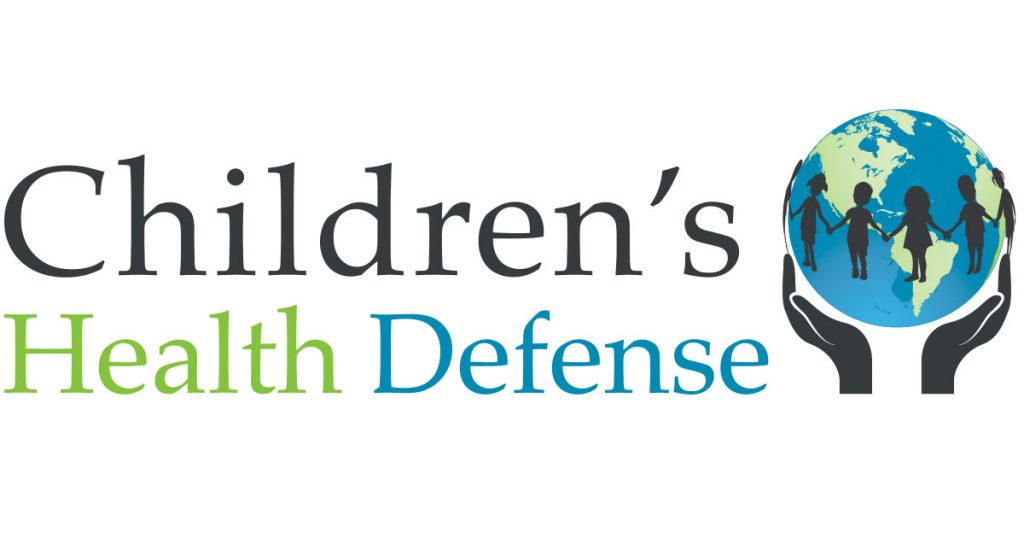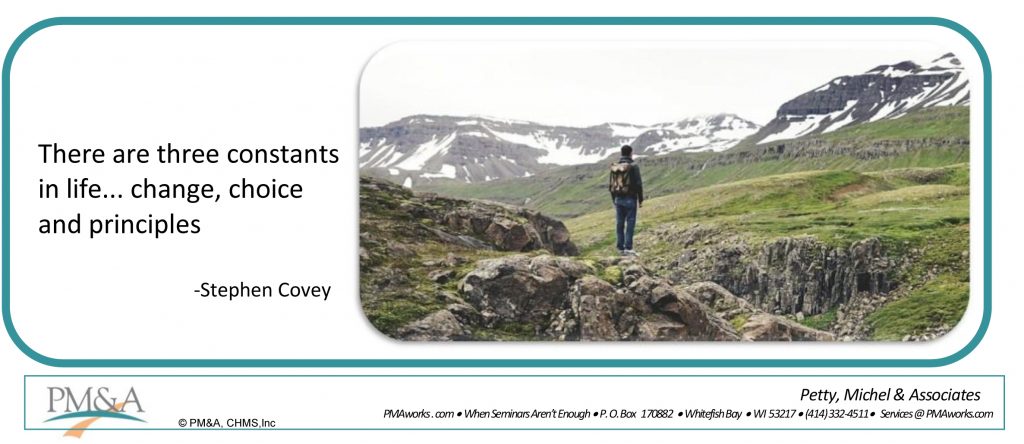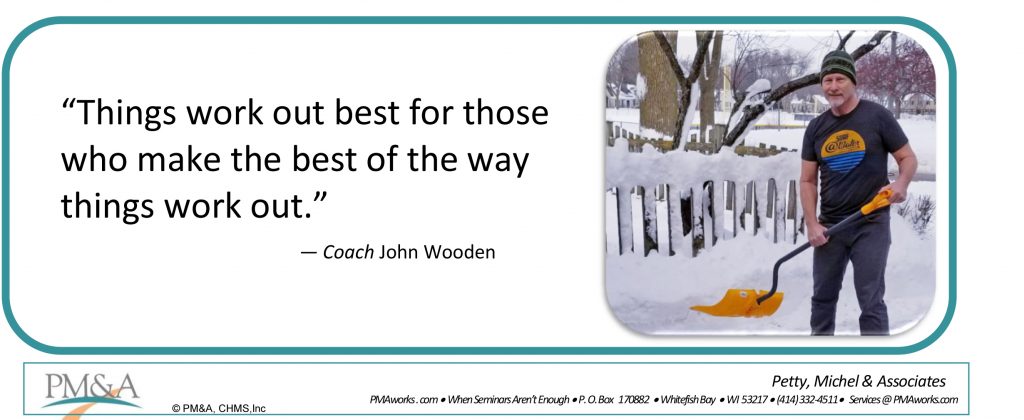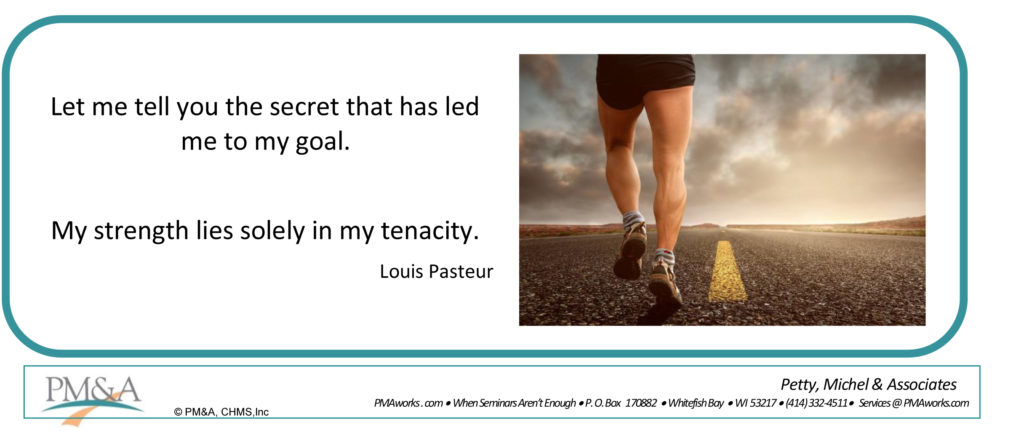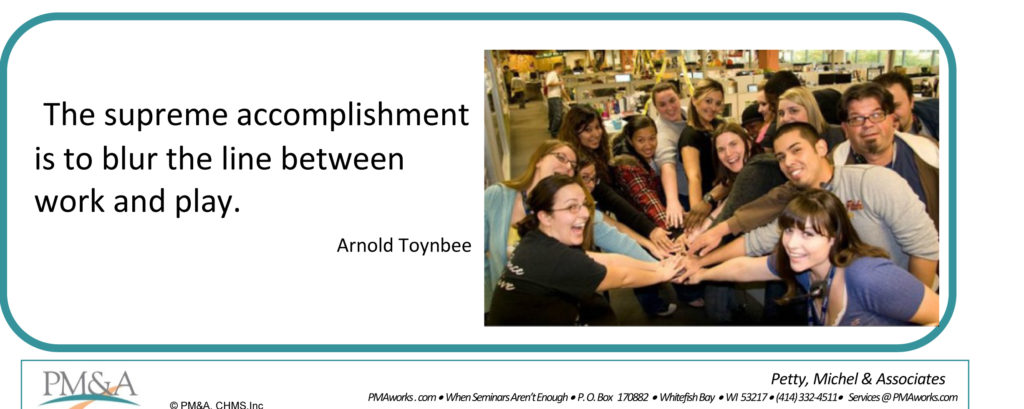
“Marketing is an inside job,” one business owner told me years ago.
He meant it first starts with your attitude and your drive to reach your goals.
Your mental outlook will determine the effectiveness of all of your marketing activities. The good news is that your attitude is something which you do have control over. Even if you have difficult personal and environmental factors acting against you, you still have a choice on how you decide to act. The way you look at your world is entirely up to you.
Practice marketing is ultimately an “inside-out job,” and though marketing includes “outside-in” activities, such as advertising, its success is dependent upon what is happening on the “inside.” On a scale of 1-5, where “5” is strongest, and “1” is weakest, you should work daily to reach a “5” on each of these eight attitudes.
At a team meeting every few months, you can hand this article out to each team member and have each person grade (1-5) how the office has been operating regarding each attitude. You can also have a team member summarize one particular attitude and describe it to the rest of the team in their own words. These attitudes are your marketing muscles that can drive and maintain your growth. Keep working them and making them stronger.
I have observed these eight attitudes in common with successful providers and business owners. I encourage you to use them yourself.
1. Friendliness and Cheerfulness. When you smile, the whole world smiles with you. And that is what you want: your whole community smiling with you. A positive and cheerful outlook opens the channels of communication between you and your community. It is an unspoken “open invitation” for people to interact with you. The happier you are, and the more positive your outlook is, the easier all other marketing efforts will be. “Laugh, and the world laughs with you; Weep, and you weep alone….” From a Poem by Ella Wheeler (1883)
2. Interested Attitude. Where I have been successful in selling and marketing services, this has always been my secret: be interested in the other person. Don’t fake it. Just start with whatever strikes your curiosity. You will find that having an honest interest in people is one of your best sales and marketing tools. People respond positively to sincere curiosity about them. “Betty, where did you find those blue shoes?” “So Frank, I have always wondered, why do you guys call yourselves the Kiwanis?” You don’t have to be interested in everyone. Be courteous and be professional, of course. But you’ll find that you can find something of interest in most people. Since your interest is genuine and not simulated, the other person can begin to trust you. You are not a phony operating off of a script. Even if your curiosity makes you seem a bit forward, at least you are honest. Behind your interest should be a desire to understand the other person, and this requires empathy. This kind of interest begets communication which lays the foundation for the other person knowing you, liking you, and trusting you.
3. “Get to Know Me” Attitude. You should want the community to know you. You should want them to know that you are an excellent provider and that your business gets results. Don’t assume people know what you do – or even care. Maybe they know you are a provider but think you are retired, or too busy and no longer taking new patients, or too important to talk to them. And let them get to know about you personally– that your dog’s name is Louie and you are not from Canada, even though you are very nice. Be willing to have the whole community know all about you, and believe that once they do, they’ll like you. Don’t hide. We all spend too much time in boxes – our houses, our offices, our cars, and other buildings. Get out of the boxes and be willing to be seen and heard. “It is better to be looked over than overlooked.” (Mae West)
4. “Gratitude Attitude.” This is a term often used by Zig Ziglar, meaning be grateful and appreciative. The “Gratitude Attitude” melts the ice between people. It shows respect and honors those around you, especially patients, prospective patients, your teammates, and of course, your family and friends. People hate to be ignored and too often we take for granted the amazing souls around us each day. Be thankful to be a provider and business owner and that you have an opportunity to help people. Show your gratitude to others. Let them know how you appreciate them. Count your blessings daily. “Gratitude is not only the greatest of virtues but the parent of all the others.” (Marcus Tullius Cicero. 106 BC -43 BC)
5. Service Attitude. Be a missionary on a mission to help. Be a giver. In the office, think ahead of what each patient needs each day and make sure they get it. Outside of the office, realize that people are in trouble, have problems, and want relief, so help them. Many are looking for answers. Offer information, community services, consultations, and be a “do-gooder.” Find out what people want and help them achieve it – through your services or another’s. It has been said that “The hole that you give through — is the hole through which you will receive.”
6. Big Capacity Attitude. “Whatever the mind can conceive and believe, it can achieve.” (Napoleon Hill.) Hold the concept that everyone in your community should receive your services. THINK BIG. Think abundance. Be willing to meet hundreds of new people each day and be open to scores of new patients. The mechanics of paperwork, finances, and procedure will all follow. Don’t let yourself become encumbered mentally by these things now. Get rid of the yellow light in your business and turn them all green. “Think little goals and expect little achievements. Think big goals and win big success.” (David J. Schwartz, The Magic of Thinking Big.)
7. Industriousness Attitude. Your outlook towards moving the business forward has to be a vigorous one. You must be ready to jump into the thick of things any time and get the work done. You will need a “can do, will do” attitude, one that enjoys being productive. It takes much more energy and effort to get and keep a business going than most people think. Marketing is simply physics. If you expend energy into your business and the community, there will be a reciprocal force — in terms of goodwill and new patients – coming back. Like planting seeds in the spring. You harvest what you sow. Don’t blame the politicians if the tomatoes didn’t come in at harvest time this year because you were too lazy to plant them. The more you sow, the more you can reap.
8. Have Faith, Confidence, and Belief. Be forthright and confident about the benefits of your profession, your skills as a provider, and the services your office can bring about. From this knowledge, you can be authoritative in telling your story and scheduling new patients. Know that you can help your patient. Believe and decide that they will win and you will succeed. If you are confident in what you are selling, then others will be too.
Edward Petty


